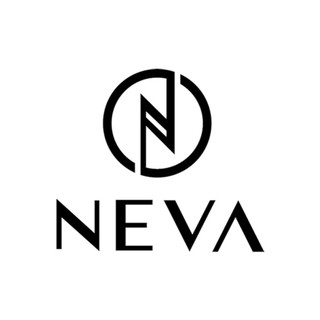AI Chatbot in Python: Costing You Less Than $100?
It’s well suited to understand freeform text input and formulate text responses, and it’s trained on a vast corpus of public domain knowledge. Nowadays, developing Chatbots is also at a reasonable cost, with the advancement in technology adding the cherry to the top. Developing and integrating Chatbots has become easier with supportive programming languages like Python and many other supporting tools. Chatbots can also be utilized in therapies where a person suffering from loneliness can easily share their concerns before the bot and find peace with their sufferings. Chatbots are proving to be more advantageous to humans and are becoming a good friend to talk with its text-to-speech technology.
This is where tokenizing supports text data – it converts the large text dataset into smaller, readable chunks (such as words). Once this process is complete, we can go for lemmatization to transform a word into its lemma form. Then it generates a pickle file in order to store the objects of Python that are utilized to predict the responses of the bot.
Developers can interface with this database using Chatterbot’s Storage Adapters. Once we get a response, we then add the response to the cache using the add_message_to_cache method, then delete the message from the queue. Then we consolidate the input data by extracting the msg in a list and join it to an empty string. In the next section, we will focus on communicating with the AI model and handling the data transfer between client, server, worker, and the external API. Now copy the token generated when you sent the post request to the /token endpoint (or create a new request) and paste it as the value to the token query parameter required by the /chat WebSocket. We can store this JSON data in Redis so we don’t lose the chat history once the connection is lost, because our WebSocket does not store state.
Well, Python, with its extensive array of libraries like NLTK (Natural Language Toolkit), SpaCy, and TextBlob, makes NLP tasks much more manageable. These libraries contain packages to perform tasks from basic text processing to more complex language understanding tasks. Python AI chatbots are essentially programs designed to simulate human-like conversation using Natural Language Processing (NLP) and Machine Learning. ChatterBot is a library in python which generates responses to user input. It uses a number of machine learning algorithms to produce a variety of responses. It becomes easier for the users to make chatbots using the ChatterBot library with more accurate responses.
We won’t require 6000 lines of code to create a chatbot but just a six-letter word “Python” is enough. Let us have a quick glance at Python’s ChatterBot to create our bot. ChatterBot is a Python library built based on machine learning with an inbuilt conversational dialog flow and training engine.
This has been achieved by iterating over each pattern using a nested for loop and tokenizing it using nltk.word_tokenize. The words have been stored in data_X and the corresponding tag to it has been stored in data_Y. The first thing is to import the necessary library and classes we need to use. With increased responses, the accuracy of the chatbot also increases. The program selects the closest matching response from the closest matching statement that matches the input, it then chooses the response from the known selection of statements for that response. We also want a list of all of the unique words in our patterns (we will talk about why later), so lets setup some blank lists to store these values.
Scripted ai chatbots are chatbots that operate based on pre-determined scripts stored in their library. When a user inputs a query, or in the case of chatbots with speech-to-text conversion modules, speaks a query, the chatbot replies according to the predefined script within its library. This makes it challenging to integrate these chatbots with NLP-supported speech-to-text conversion modules, and they are rarely suitable for conversion into intelligent virtual assistants.
Leverage existing AI self-learning chatbot platforms like AI Self-learning Chatbot, offering pre-built models with self-learning capabilities. By adhering to the platform’s documentation and guidelines, seamlessly integrate these chatbots into your application or website. Then, tailor the chatbot’s behavior and responses to align with your specific requirements. Self-learning chatbots adapt to individual user preferences and requirements by learning from past interactions. This adaptability enables them to deliver personalized responses, fostering a more engaging and satisfying user experience.
This timestamped queue is important to preserve the order of the messages. We created a Producer class that is initialized with a Redis client. We use this client to add data to the stream with the add_to_stream method, which takes the data and the Redis channel name.
Finally, in line 13, you call .get_response() on the ChatBot instance that you created earlier and pass it the user input that you collected in line 9 and assigned to query. Instead, you’ll use a specific pinned version of the library, as distributed on PyPI. Don’t forget to test your chatbot further if you want to be assured of its functionality, (consider using software test automation to speed the process up). A corpus is a collection of authentic text or audio that has been organised into datasets. Whether you’re building a customer support assistant, a virtual tutor, or a personalized recommendation system, the principles of self-learning chatbot development in Python remain invaluable.
Using .train() injects entries into your database to build upon the graph structure that ChatterBot uses to choose possible replies. In the previous step, you built a chatbot that you could interact with from your command line. The chatbot started from a clean slate and wasn’t very interesting to talk to. The call to .get_response() in the final line of the short script is the only interaction with your chatbot. And yet—you have a functioning command-line chatbot that you can take for a spin. In line 8, you create a while loop that’ll keep looping unless you enter one of the exit conditions defined in line 7.
How to Generate a Chat Session Token with UUID
NLP technologies have made it possible for machines to intelligently decipher human text and actually respond to it as well. Deploy the chatbot to a platform or integrate it into your application or website. Set up the necessary infrastructure and servers to handle user interactions, ensuring the chatbot remains accessible and responsive. ChatterBot makes it easy to create software that engages in conversation.
The chatbot market is projected to grow from $2.6 billion in 2019 to $9.4 billion by 2024. This doesn’t come as a surprise when you look at the immense benefits chatbots bring to businesses. According to a study by IBM, chatbots can reduce customer services cost by up to 30%.
You’ll get the basic chatbot up and running right away in step one, but the most interesting part is the learning phase, when you get to train your chatbot. The quality and preparation of your training data will make a big difference in your chatbot’s performance. You can foun additiona information about ai customer service and artificial intelligence and NLP. The significance of Python AI chatbots is paramount, especially in today’s digital age. They are changing the dynamics of customer interaction by being available around the clock, handling multiple customer queries simultaneously, and providing instant responses.
Use the get the response() function to communicate with your chatbot in the fourth step of the creation process. You must train the bot after completing an example of ChatterBot to increase accuracy and performance. The third step in developing an AI-based Python chatbot is this one.
They’re useful for handling all kinds of tasks from routing tasks like account QnA to complex product queries. In this blog, we will go through the step by step process of creating simple conversational AI chatbots using Python & NLP. Now we have an immense understanding of the theory of chatbots and their advancement in the future. Let’s make our hands dirty by building one simple rule-based chatbot using Python for ourselves.
Join us as we unravel the mysteries of AI-driven self-learning chatbots, empowering you to shape the future of human-computer interaction. ChatterBot uses entire sentences when responding due to being trained with minimal data amounts. Using a built-in Re module that supports standard expression processing, this method employs regular expressions to eliminate non-conversation related message information from a chat export file. Although ChatterBot remains a unique solution for creating Python chatbots, its development has been undervalued recently and thus features many bugs.
- By carefully collecting and preprocessing relevant datasets, developers lay the groundwork for the chatbot to understand user inquiries and generate accurate responses.
- Instead, it will try to understand the actual intent of the guest and try to interact with it more, to reach the best suitable answer.
- The chatbot might only be able to respond to some of your questions due to its limited training and knowledge.
- To further enhance your understanding, we also explored the integration of LangChain with Panel’s ChatInterface.
- This process will show you some tools you can use for data cleaning, which may help you prepare other input data to feed to your chatbot.
- There are numerous sources of data that can be used to create a corpus, including novels, newspapers, television shows, radio broadcasts, and even tweets.
Now, it’s time to move on to the second step of the algorithm that is used in building this chatbot application project. In conclusion, developing a self-learning chatbot in Python opens up a world of possibilities for enhancing user experiences and streamlining interactions. With the tools and techniques outlined in this guide, you have the foundation to embark on your journey to create intelligent and adaptive chatbots. By leveraging Python’s robust libraries and frameworks, you can empower your chatbots to continuously learn and improve, providing personalized and engaging interactions for users. Self-learning chatbots continually refine their models and learn from user interactions, ensuring continuous improvement.
Step 2 : Train your AI assistant
This step involves cleaning up WhatsApp export data to use as input when training a chatbot about houseplants, for example. They can learn from existing data and train themselves with artificial intelligence and machine learning. Additionally, developers can leverage conversational AI techniques such as dialogue management to maintain context and coherence in multi-turn conversations, ensuring a seamless user experience.
For those opting to develop a self-learning chatbot from scratch, compiling a dataset of conversations using tools like Chatinsight is essential. Gather conversations from diverse sources such as customer support logs, chat transcripts, or publicly available datasets to ensure comprehensive coverage of potential user queries and responses. Let’s bring your conversational AI dreams to life with, one line of code at a time! Also, We will Discuss how does Chatbot Works and how to write a python code to implement Chatbot. After all of the functions that we have added to our chatbot, it can now use speech recognition techniques to respond to speech cues and reply with predetermined responses.
Build Your Own AI Chatbot with OpenAI and Telegram Using Pyrogram in Python – Open Source For You
Build Your Own AI Chatbot with OpenAI and Telegram Using Pyrogram in Python.
Posted: Thu, 16 Nov 2023 08:00:00 GMT [source]
The num_beams parameter is responsible for the number of words to select at each step to find the highest overall probability of the sequence. We also should set the early_stopping parameter to True (default is False) because it enables us to stop beam search when at least `num_beams` sentences are finished per batch. To interact with the model, we’ll need to install PyTorch from the official website. This model is based on the same idea of passing the previous information through all network layers.
The Chatterbot Corpus is an open-source user-built project that contains conversational datasets on a variety of topics in 22 languages. These datasets are perfect for training a chatbot on the nuances of languages – such as all the different ways a user could greet the bot. This means that developers can jump right to training the chatbot on their customer data without having to spend time teaching common greetings. Rule-based chatbots, also known as scripted chatbots, were the earliest chatbots created based on rules/scripts that were pre-defined. For response generation to user inputs, these chatbots use a pre-designated set of rules. This means that these chatbots instead utilize a tree-like flow which is pre-defined to get to the problem resolution.
Interact with python function
You can select which version best meets your requirements for installation directly through them; some forks may provide different instructions regarding setup as well. By providing relevant industry data to a chatbot, it will become industry-specific and remember past responses as it builds its internal graph for reinforcement learning optimal responses. Every time a query is sent to the chatbot, an automatic response is generated using this data. The best answer from the database is chosen using NLP and AI and then given to the user.
You’ll need to pre-process the documents which means converting raw textual information into a format suitable for training natural language processing models. In this method, we’ll use spaCy, a powerful and versatile natural language processing library. To create a self-learning chatbot using the NLTK library in Python, you’ll need a solid understanding of Python, Keras, and natural language processing (NLP).
Huggingface provides us with an on-demand limited API to connect with this model pretty much free of charge. Ultimately, we want to avoid tying up the web server resources by using Redis to broker the communication between our chat API and the third-party API. The get_token function receives a WebSocket and token, then checks if the token is None or null.
You will learn about types of chatbots and multiple approaches for building the chatbot and go through its top applications in various fields. Further, you will understand its architecture and mechanism through understanding the stages and processes involved in detail. Lastly, the hands-on demo will also give you practical knowledge of implementing chatbots in Python. Enroll and complete all the modules in the course, along with the quiz at the end, to gain a free certificate. Moreover, the more interactions the chatbot engages in over time, the more historic data it has to work from, and the more accurate its responses will be. Let us consider the following example of training the Python chatbot with a corpus of data given by the bot itself.
Again, please remember to make sure to install `langchain` in your environment and add your OpenAI API key in the script. Curious to know more about how `ChatInterface` works https://chat.openai.com/ under the hood? It’s a high-level widget that wraps around the middle-level widget `ChatFeed` that manages a list of `ChatMessage` items for displaying chat messages.
The server will hold the code for the backend, while the client will hold the code for the frontend. Then create a simple command-line interface for the chatbot that asks the user for input, calls the ‘predict_answer’ function to get the answer, and prints the answer to the console. Create training data and labels, and build a neural network model using the Keras Sequential API.
In server.src.socket.utils.py update the get_token function to check if the token exists in the Redis instance. If it does then we return the token, which means that the socket connection is valid. Next open up a new terminal, cd into the worker folder, and create and activate a new Python virtual environment similar to what we did in part 1. Imagine a scenario where the web server also creates the request to the third-party service. This means that while waiting for the response from the third party service during a socket connection, the server is blocked and resources are tied up till the response is obtained from the API. Ideally, we could have this worker running on a completely different server, in its own environment, but for now, we will create its own Python environment on our local machine.
This example will demonstrate how to save an export chat file into a Google Drive Folder called Exports. You may add more than one session by altering lines accordingly and creating another statement and response pair for iterables with precisely two items each. Additionally, you pass in any queries assigned from this step in this callback method. Line 8 creates a While Loop that will loop until one of the conditions from Line 7 is met, and Line 13 finally calls.get_response() giving all input collected earlier from Line 9. To learn more, sign up to our email list at Aloa’s blog page today to discover more insights, tips, and resources on software development, outsourcing, and emerging technologies. Explore our latest articles and stay updated on industry trends to drive your business forward with Aloa’s expertise and insights.
We then create training data and labels, and build a neural network model using the Keras Sequential API. The model consists of an embedding layer, a dropout layer, a convolutional layer, a max pooling layer, an LSTM layer, and two dense layers. CursedGPT leverages the Hugging Face Transformers library to interact with a pre-trained GPT-2 model. It employs TensorFlow for model management and AutoTokenizer for efficient tokenization. The script enables users to input prompts interactively, generating text responses from the GPT-2 model.
Go to the address shown in the output, and you will get the app with the chatbot in the browser. In the next tutorial we will do some preprocessing of this data and get it ready to feed to our neural network. If you need any houseplant maintenance or care tips guidance, connect to chat.
If more than one Logic Adapter is used, the response with the highest cumulative confidence score from all Logic Adapters will be selected. Next, we need to update the main function to add new messages to the cache, read the previous 4 messages from the cache, and then make an API call to the model using the query method. It’ll have a payload consisting of a composite string of the last 4 messages.
Every time a chatbot gets the input from the user, it saves the input and the response which helps the chatbot with no initial knowledge to evolve using the collected responses. These chatbots are inclined towards performing a specific task for the user. Chatbots often perform tasks like making a transaction, booking a hotel, form submissions, etc. The possibilities with a chatbot are endless with the technological advancements in the domain of artificial intelligence.
With increasing advancements, there also comes a point where it becomes fairly difficult to work with the chatbots. Before starting to work on our chatbot we need to download a few python packages. Please note as of writing this these packages will ONLY WORK IN PYTHON 3.6. Artificial intelligence system houseplant care tips based on chat data. Your Python Chatbot was just successfully constructed with the ChatterBot Library. While its AI might still need work, you’re not already benefiting from preprocessed data extracted from WhatsApp exports to gain its intelligence.
In developing a chatbot Python, thorough data gathering and preparation are essential to ensure its effectiveness. This includes utilizing insights from an Ask AI product review to inform decision-making and refine the chatbot’s capabilities. By carefully collecting and preprocessing relevant datasets, developers lay the groundwork for the chatbot to understand user inquiries and generate accurate responses.
In the code above, the client provides their name, which is required. We do a quick check to ensure that the name field is not empty, then generate a token using uuid4. To generate a user token we will use uuid4 to create dynamic routes for our chat endpoint. Since this is a publicly available endpoint, we won’t need to go into details about JWTs and authentication. Finally, train the model for 50 epochs and store the training history.
The StreamHandler class will be used for streaming the responses from ChatGPT to our application. In this example, we get a response from the chatbot according Chat GPT to the input that we have given. Let us try to build a rather complex flask-chatbot using the chatterbot-corpus to generate a response in a flask application.
It equips you with the tools to ensure that your chatbot can understand and respond to your users in a way that is both efficient and human-like. This model, presented by Google, replaced earlier traditional sequence-to-sequence models with attention mechanisms. The AI chatbot benefits from this language model as it dynamically understands speech and its undertones, allowing it to easily perform NLP tasks. Some of the most popularly used language models in the realm of AI chatbots are Google’s BERT and OpenAI’s GPT.
ChatterBot utilizes the BestMatch logic adapter by default to select an appropriate response. Distance is used by this logic adapter when matching input strings against statements stored in its database; then selects one as close to an exact match as possible based on this algorithm. ChatterBot replies to user messages with complete lines, including all message metadata – such as timestamps and names. Below is an example export if you use something other than WhatsApp or would rather avoid working with personal data. Writing the tutorial code should be easy if you understand these concepts. Even if you lack all of the knowledge to get started on it right away, creating could benefit your education – plus, if stuck, take some citizen developer time to review these resources.
Final Thoughts and Next Steps
We are sending a hard-coded message to the cache, and getting the chat history from the cache. When you run python main.py in the terminal within the worker directory, you should get something like this printed in the terminal, with the message added to the message array. In this section, we will build the chat server using FastAPI to communicate with the user. We will use WebSockets to ensure bi-directional communication between the client and server so that we can send responses to the user in real-time. To set up the project structure, create a folder namedfullstack-ai-chatbot. Then create two folders within the project called client and server.
Our example code will use Apify’s Website Content Crawler to scrape the selected website and store it in a local vector database. Python seamlessly integrates with various technologies and frameworks, enabling connections to web apps, APIs, databases, and other backend systems. Leveraging frameworks like Flask or Django enhances integration capabilities, fostering enriched user experiences. Python’s adaptability empowers you to craft diverse chatbot components, tailor their actions, and expand their capabilities as per your specific needs. After we are done setting up the flask app, we need to add two more directories static and templates for HTML and CSS files.
At Apriorit, we have a team of AI and ML developers with experience creating innovative smart solutions for healthcare, cybersecurity, automotive, and other industries. With us, you can be sure, that your artificial intelligence chatbot project is in the right hands. The main idea of this model is to pass the most important data from the text that’s being processed to the next layers for the network to learn and improve.
A great next step for your chatbot to become better at handling inputs is to include more and better training data. If you do that, and utilize all the features for customization that ChatterBot offers, then you can create a chatbot that responds a little more on point than 🪴 Chatpot here. You can imagine that training your chatbot with more input data, particularly more relevant data, will produce better results. Your chatbot has increased its range of responses based on the training data that you fed to it. As you might notice when you interact with your chatbot, the responses don’t always make a lot of sense. For example, you may notice that the first line of the provided chat export isn’t part of the conversation.
Conversation rules include key phrases that trigger corresponding answers. Scripted chatbots can be used for tasks like providing basic customer support or collecting contact details. Assess the chatbot’s performance by testing it with sample queries and evaluating its ability to generate contextually appropriate responses. Analyze user feedback to identify areas for improvement and refine the model and training process accordingly. Building a chatbot Python offers many possibilities for businesses and developers alike, enabling seamless user interactions, streamlined processes, and enhanced customer satisfaction.
Using it frequently should improve its responses over time – though doing this manually might prove daunting at times. This tutorial doesn’t use forks to get started, so using PyPI’s pinned version will suffice. Step one provides instructions for installing self-supervised learning ChatterBot; step 2 details how it should be set up without training (step 1). The benefit of ChatterBot is that it can offer this functionality in various current customers’ languages.
The realm of artificial intelligence sees self-learning AI chatbots as dynamic entities that autonomously improve their capabilities through data analysis and iterative learning processes. Python houses a vibrant community of AI and machine learning enthusiasts, providing an array of tutorials, forums, and open-source projects. This wealth of knowledge facilitates learning and guidance during self-learning chatbot development. Train the language model on preprocessed training data, adjusting hyperparameters like learning rate and batch size for optimal performance. Monitor training progress and assess the model using metrics such as perplexity or accuracy. Unravel the secrets behind training your bot to adapt and evolve, catering to the unique needs of its users.
- In this step, you’ll set up a virtual environment and install the necessary dependencies.
- Finally, we train the model for 50 epochs and store the training history.
- On the other hand, an AI chatbot is one which is NLP (Natural Language Processing) powered.
- Exposure to extensive data enhances their response accuracy and complexity handling abilities, although their implementation entails greater complexity.
Moreover, from the last statement, we can observe that the ChatterBot library provides this functionality in multiple languages. Thus, we can also specify a subset of a corpus in a language we would prefer. Fundamentally, the chatbot utilizing Python is designed and programmed to take in the data we provide and then analyze it using the complex algorithms for Artificial Intelligence. Since these bots can learn from experiences and behavior, they can respond to a large variety of queries and commands. In the realm of chatbots, NLP comes into play to enable bots to understand and respond to user queries in human language.
Their efficiency in addressing repetitive tasks makes them ideal for applications such as customer support, where timely assistance is crucial. NLP is a branch of artificial intelligence focusing on the interactions between computers and the human language. In order to train a it in understanding the human language, a large amount of data will need to be gathered. This data can be acquired ai chat bot python from different sources such as social media, forums, surveys, web scraping, public datasets or user-generated content. As we mentioned above, you can use natural language processing , artificial intelligence, and machine learning for chatbot development. However, the process of training an AI chatbot is similar to a human trying to learn an entirely new language from scratch.
Check out the docs on ChatInterface, ChatFeed and ChatMessage to learn more. It does not have any clue who the client is (except that it’s a unique token) and uses the message in the queue to send requests to the Huggingface inference API. Lastly, we will try to get the chat history for the clients and hopefully get a proper response. Finally, we will test the chat system by creating multiple chat sessions in Postman, connecting multiple clients in Postman, and chatting with the bot on the clients. Note that we also need to check which client the response is for by adding logic to check if the token connected is equal to the token in the response. Then we delete the message in the response queue once it’s been read.
This is the first sequence transition AI model based entirely on multi-headed self-attention. It is based on the concept of attention, watching closely for the relations between words in each sequence it processes. In this way, the transformer model can better interpret the overall context and properly understand the situational meaning of a particular word. It’s mostly used for translation or answering questions but has also proven itself to be a beast at solving the problems of above-mentioned neural networks. Now, we will extract words from patterns and the corresponding tag to them.

















